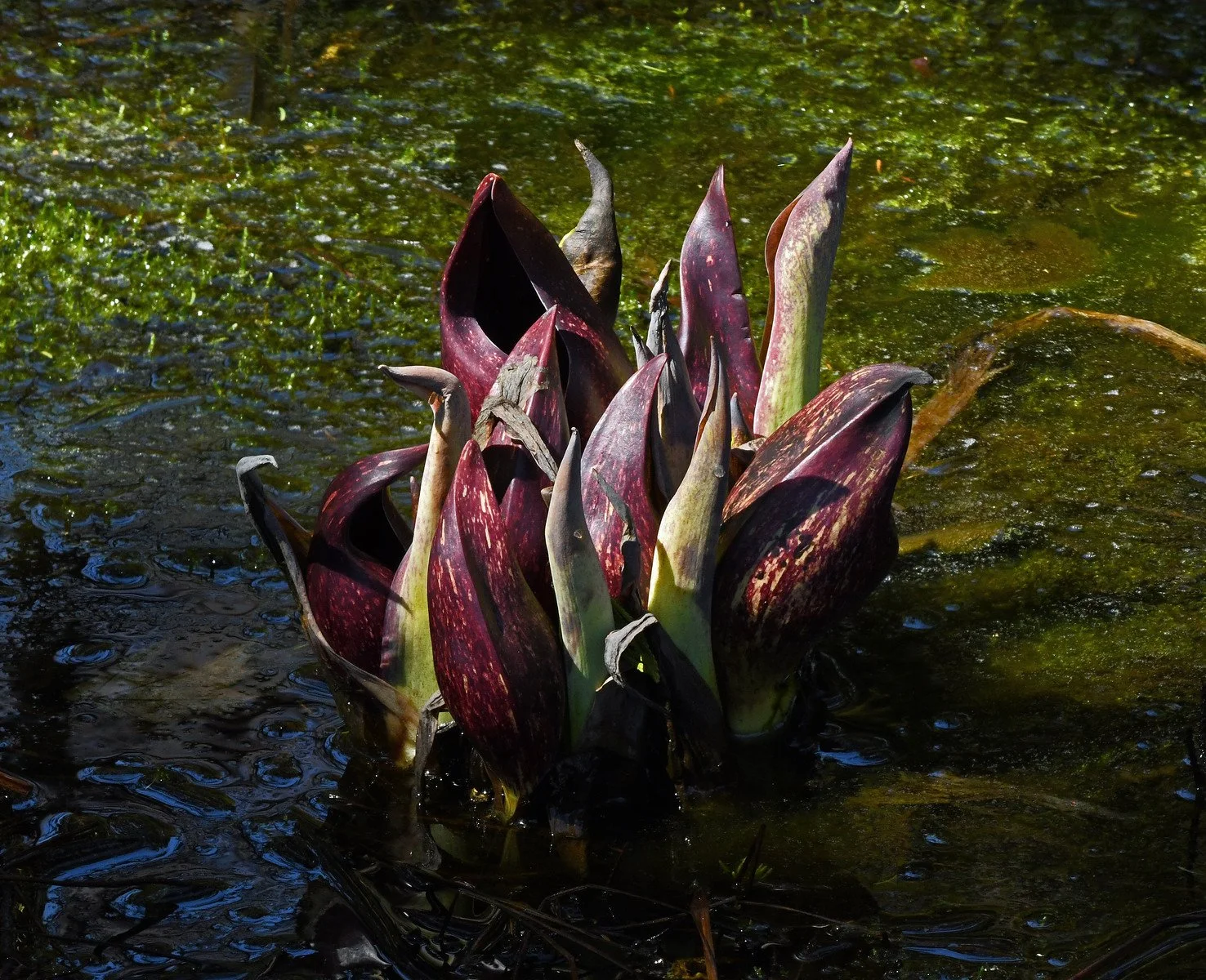As of yesterday, as you see, this colony of Eastern skunk cabbage (Symplocarpus foetidus) that we’ve been monitoring has not shown any leaf shoots, but its purple spathes appear to be doing well.
A nearby smaller plant had opened a spathe yesterday to advertise its internal spadix of flowers and allow their foul smell to drift farther to attract pollinators, which apparently think that rotting meat is a heavenly scent.
Skunk cabbage has a very high content of oxalic acid, which makes it virtually toxic for humans – the smallest taste creates almost unbearable, burning, needle-like pains in humans. The plant is eaten by few wild animals, but is almost essential to one group of mammals that give the plant its alternative name: Bearweed.
Black and brown bears will eat the roots and other parts of the young plant in the spring as a form of self-medication when the animals arise from hibernation. They usually are severely constipated at that time by up to a foot-long detritus blockage that accumulated in their lower intestines while they were dormant. You probably do not want to be near any bear when the acid of its skunk cabbage breakfast meets the firmness of its hibernation blockage. (Images taken in Brooklin, Maine, on April 15, 2022.)

